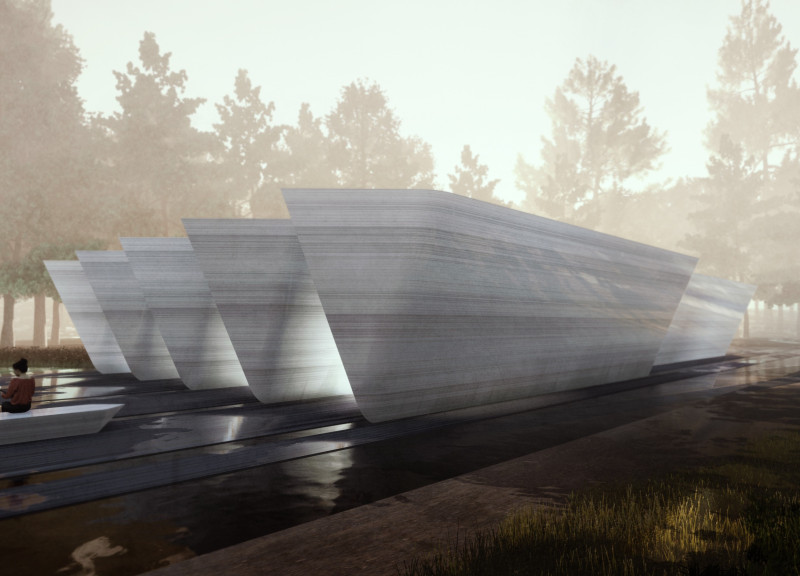5 key facts about this project
The project explores the themes of Life and Death within the context of the Riga Forest Cemetery in Latvia. The aim is to create a space for contemplation that does not align with any specific religion. The design draws from Latvian mythology, using cultural symbols to form a landscape that serves both as a memorial and a reflection of its natural surroundings.
Conceptual Framework
The design features elongated, slender forms that give the impression of floating, symbolizing the journey of the deceased. Instead of a single monumental structure, the layout consists of modular, interconnected elements that work together to create a unified space for remembrance. The approach intends to establish a peaceful relationship between the living and the dead, honoring the emotional significance of the site.
Symbolism and Cultural Heritage
Latvian mythology is central to the design, incorporating important symbols such as Māra and Dievs. Māra's Earth Sign represents stability and protection after death, while Dievs signifies the spiritual and non-material aspects of existence. These elements enhance the site's purpose as a final resting place and reinforce the idea of continuity beyond life. Furthermore, Māra's Water Sign introduces the concept of change and the fleeting nature of life, adding depth to the design's narrative.
Site Strategy and Materiality
Strategically dividing the site into strips improves access and flow, allowing visitors to move through the space naturally. The design creates private areas through offsets between volumes, fostering moments for personal reflection. Stone-clad objects anchor the design, allowing it to blend with the landscape, while addressing practical concerns related to durability and maintenance.
Columbarium Design Detail
The columbarium is a central feature, characterized by a straightforward portal frame system. This framework provides a sense of lightness and clarity, differing from traditional heavy memorial structures. The columbarium encourages contemplation, integrating with the overall design and supporting the peaceful atmosphere of the Riga Forest Cemetery.






















































